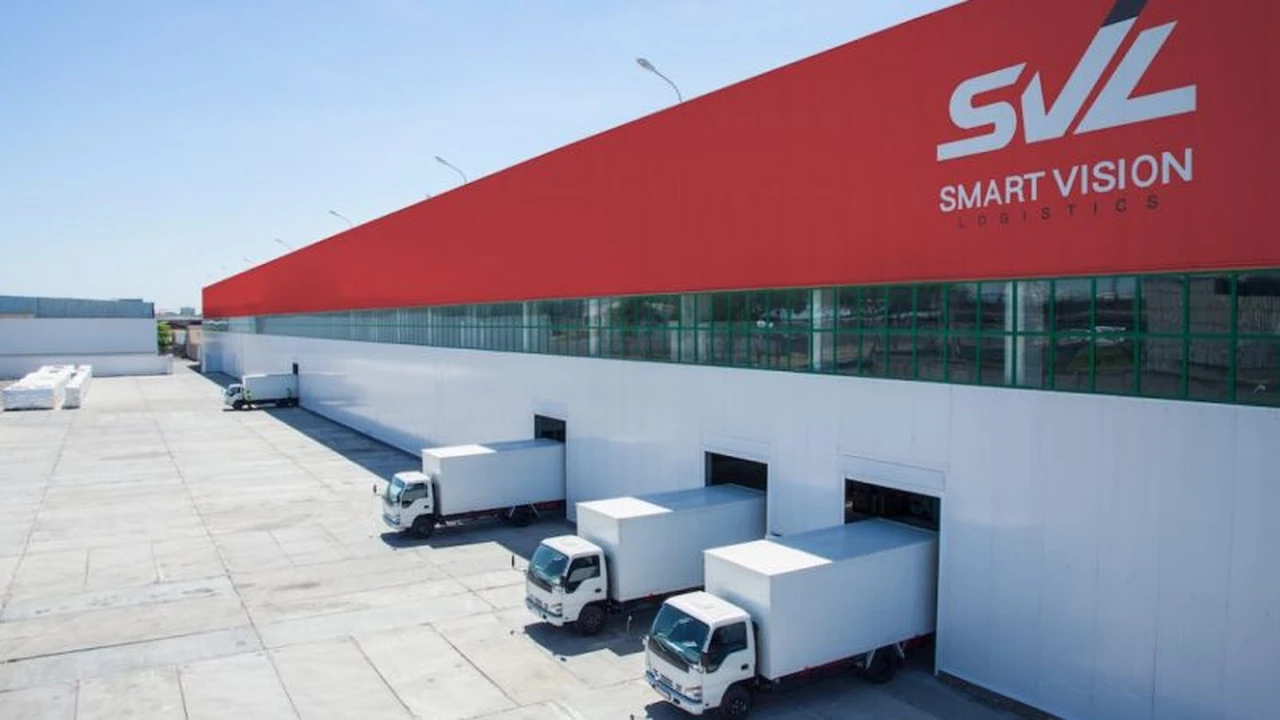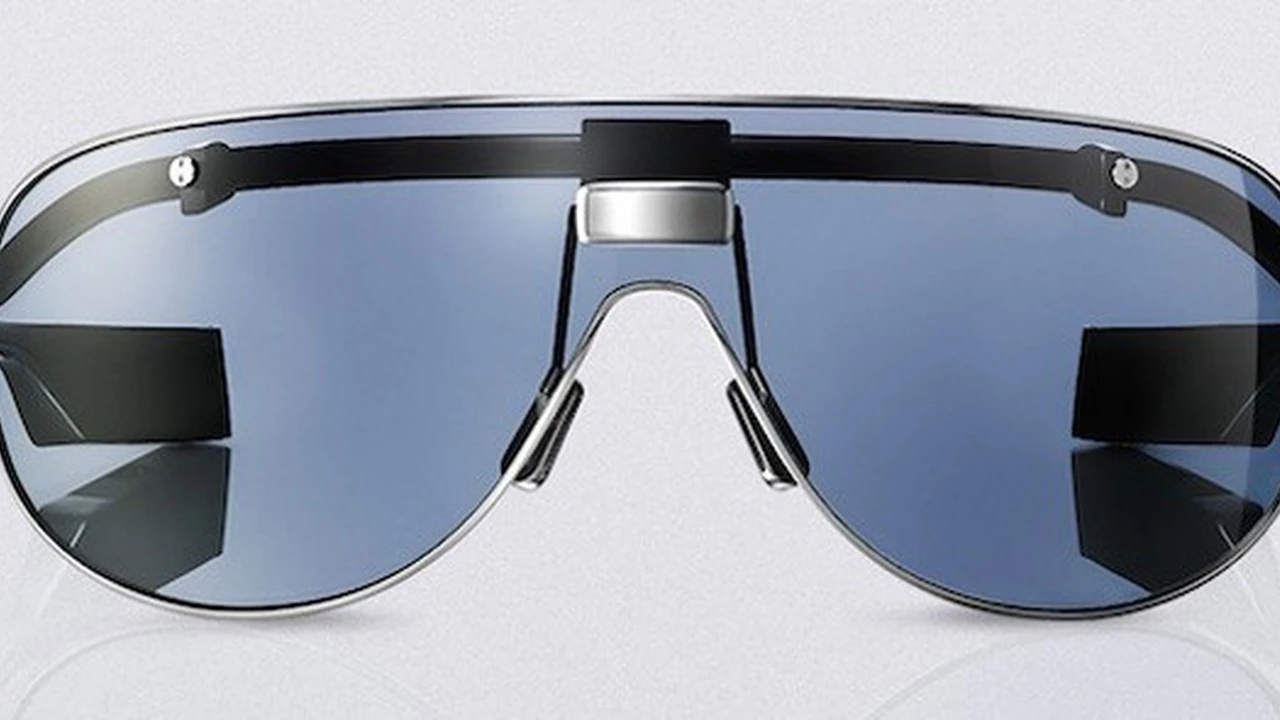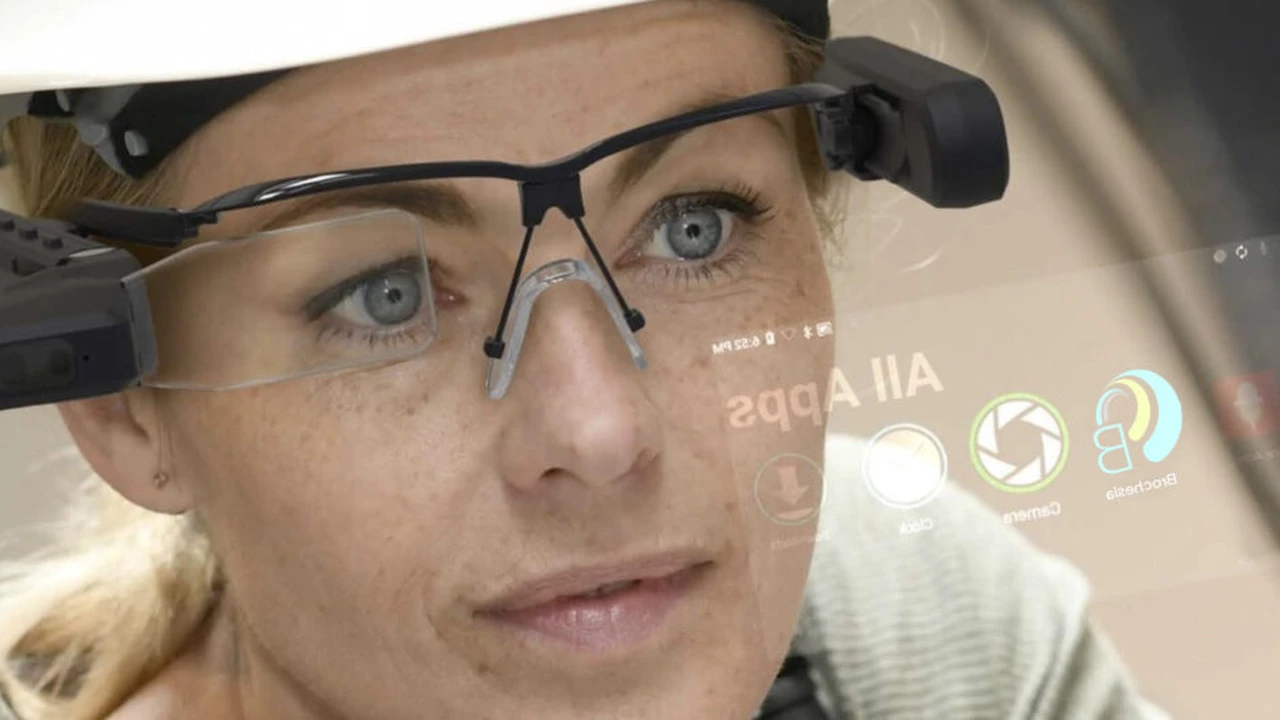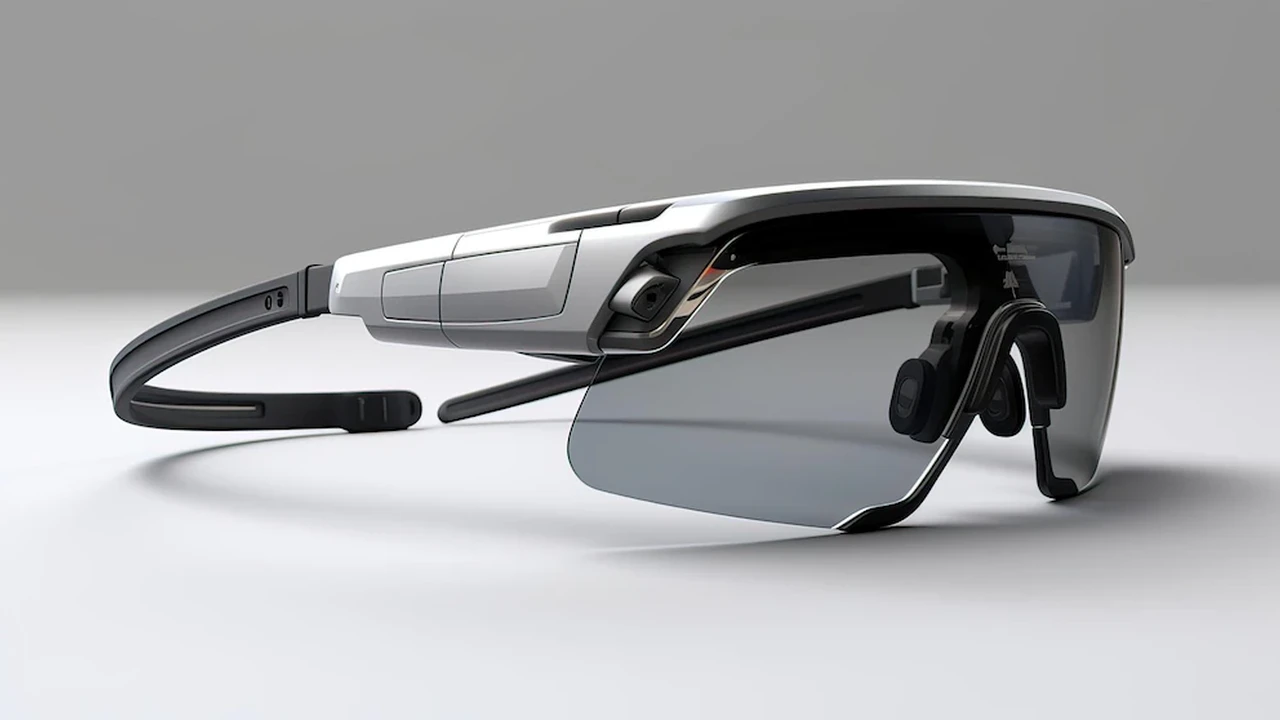Smart Glasses in Logistics and Warehousing Streamlining Operations
Discover how smart glasses are optimizing logistics and warehousing operations for greater efficiency.

Smart Glasses in Logistics and Warehousing Streamlining Operations
The world of logistics and warehousing is a complex, fast-paced environment where efficiency, accuracy, and speed are paramount. Every second saved, every error prevented, directly impacts the bottom line. For years, these industries have relied on traditional methods like handheld scanners, paper pick lists, and manual data entry. While these methods have served their purpose, they often lead to inefficiencies, human error, and slower turnaround times. Enter smart glasses – a revolutionary technology that's rapidly transforming how logistics and warehousing operations are conducted. These wearable devices offer a hands-free, intuitive interface that can significantly streamline workflows, improve accuracy, and boost overall productivity.
The Power of Hands-Free Operation Smart Glasses Benefits
One of the most significant advantages smart glasses bring to logistics and warehousing is their hands-free nature. Imagine a warehouse worker needing to pick an item. Traditionally, they might consult a paper list or a handheld device, then locate the item, pick it up, and then scan it. This involves multiple steps, often requiring them to put down or pick up their device, interrupting their flow. With smart glasses, the worker receives instructions directly in their field of vision. They can see the location of the item, its quantity, and even visual cues for picking, all while keeping both hands free to handle the products. This not only speeds up the picking process but also reduces the risk of dropping items or fumbling with equipment.
Beyond picking, hands-free operation extends to various other tasks. For instance, during inventory management, workers can scan barcodes simply by looking at them, with data instantly updated in the system. For quality control, they can follow visual checklists and record observations without needing to hold a clipboard or tablet. This seamless interaction with information and tasks leads to a more fluid and efficient workflow, minimizing wasted motion and maximizing output.
Enhanced Accuracy and Reduced Errors Smart Glasses for Precision
Human error is an inevitable part of any manual process, and in logistics, even small errors can lead to significant costs, including mis-shipments, returns, and customer dissatisfaction. Smart glasses dramatically reduce the potential for human error by providing real-time, accurate information directly to the worker. Instead of relying on interpreting a paper list or remembering complex sequences, workers receive precise instructions and visual confirmations.
For example, in order picking, the smart glasses can highlight the exact bin location, display a picture of the item, and confirm the quantity. If a worker attempts to pick the wrong item or an incorrect quantity, the system can immediately alert them, preventing the error before it leaves the warehouse. This level of guided assistance ensures that tasks are completed correctly the first time, leading to fewer returns, less rework, and ultimately, happier customers. The integration with warehouse management systems (WMS) means that every action is recorded and verified, providing a robust audit trail and further enhancing accuracy.
Real-Time Data and Connectivity Smart Glasses Integration
Modern logistics and warehousing operations thrive on data. Real-time insights into inventory levels, order status, and worker productivity are crucial for making informed decisions. Smart glasses are inherently connected devices, capable of integrating seamlessly with existing WMS, enterprise resource planning (ERP) systems, and other operational software. This connectivity allows for instant data exchange, providing workers with up-to-the-minute information and feeding their actions back into the system.
Imagine a scenario where an urgent order comes in. With smart glasses, the system can immediately push this order to the nearest available worker, along with the most efficient picking route. As the worker completes each step, the system updates, providing managers with a live view of progress. This real-time data flow enables dynamic adjustments to operations, optimizes resource allocation, and improves overall responsiveness to changing demands. Furthermore, the data collected by smart glasses can be analyzed to identify bottlenecks, optimize processes, and continuously improve efficiency over time.
Specific Use Cases Smart Glasses in Action
The applications of smart glasses in logistics and warehousing are diverse and impactful. Here are some key areas where they are making a significant difference:
Order Picking and Fulfillment Smart Glasses for Picking
This is perhaps the most common and impactful use case. Smart glasses guide pickers through the warehouse, displaying pick lists, item locations, and quantities. They can use visual cues, augmented reality overlays, and voice commands to confirm picks, reducing errors and increasing picking speed. This is often referred to as 'vision picking' and has shown significant improvements over traditional methods.
Inventory Management and Cycle Counting Smart Glasses for Inventory
Smart glasses simplify inventory checks and cycle counting. Workers can quickly scan items, verify stock levels, and update the inventory system in real-time, eliminating the need for manual data entry and reducing discrepancies. This leads to more accurate inventory records and better stock control.
Receiving and Put-Away Smart Glasses for Receiving
Upon receiving goods, smart glasses can guide workers through the unloading and inspection process. They can scan incoming items, verify against purchase orders, and then direct workers to the optimal put-away locations, ensuring efficient storage and minimizing misplaced inventory.
Shipping and Packing Smart Glasses for Shipping
During the packing process, smart glasses can display packing instructions, verify item counts, and even suggest optimal box sizes. For shipping, they can assist with label generation and verification, ensuring that the correct packages are sent to the right destinations.
Maintenance and Repair Smart Glasses for Maintenance
For equipment maintenance within the warehouse, smart glasses can provide technicians with augmented reality overlays showing schematics, repair instructions, and even connect them with remote experts for real-time assistance, reducing downtime and improving first-time fix rates.
Training and Onboarding Smart Glasses for Training
New employees can be trained more effectively using smart glasses. The devices can provide step-by-step visual instructions and interactive guides, accelerating the onboarding process and ensuring consistent training quality.
Recommended Smart Glasses for Logistics and Warehousing Top Models
Several smart glasses models are well-suited for the demanding environment of logistics and warehousing. Here are a few prominent examples, considering their features, durability, and typical use cases:
Vuzix M400 and M4000 Smart Glasses Industrial Use
Vuzix is a leader in industrial smart glasses, and their M400 and M4000 models are highly regarded for their ruggedness and performance. The M400 features a powerful Qualcomm XR1 processor, excellent camera for scanning, and a bright display. The M4000 offers a waveguide display for a more transparent view, which can be beneficial in certain environments. Both are designed for harsh industrial conditions, offering dust and water resistance. They integrate well with existing WMS and offer robust software development kits for custom applications. Typical Price Range: $1,500 - $2,500 USD.
RealWear HMT-1 and Navigator 500 Smart Glasses Rugged Design
RealWear devices, like the HMT-1 and the newer Navigator 500, are built for extreme industrial environments. They are known for their voice-controlled interface, which is crucial in noisy or hands-occupied settings. They are fully ruggedized, drop-proof, dust-tight, and submersible. The HMT-1 has been a staple in many industrial settings, while the Navigator 500 offers a lighter, more modular design with improved camera and display. They are ideal for tasks requiring absolute hands-free operation and robust communication. Typical Price Range: $2,000 - $2,800 USD.
Google Glass Enterprise Edition 2 Smart Glasses Enterprise Focus
While not as rugged as Vuzix or RealWear, Google Glass Enterprise Edition 2 offers a lightweight and comfortable design, making it suitable for less extreme warehouse environments or for tasks that require less physical exertion. It features an improved camera, faster processor, and better battery life than its predecessor. Its strength lies in its integration with Google's ecosystem and its ease of development for enterprise applications. It's often used for lighter picking tasks, quality control, or remote assistance. Typical Price Range: $1,000 - $1,500 USD.
Epson Moverio BT-300 and BT-400 Smart Glasses AR Capabilities
Epson's Moverio series, particularly the BT-300 and BT-400, are known for their transparent Si-OLED displays, offering excellent augmented reality capabilities. While perhaps less rugged than some industrial counterparts, their clear display makes them ideal for applications where overlaying digital information onto the real world is critical, such as complex assembly instructions or detailed visual inspections. They are comfortable for extended wear and offer good connectivity. Typical Price Range: $700 - $1,800 USD.
Microsoft HoloLens 2 Mixed Reality for Complex Tasks
While technically a mixed reality headset rather than just smart glasses, the HoloLens 2 deserves mention for its advanced capabilities in highly complex logistics and warehousing scenarios, especially for training, maintenance, and facility planning. It offers a wide field of view and sophisticated spatial computing, allowing for highly interactive 3D holograms. Its higher price point and bulkier form factor mean it's typically reserved for specialized, high-value applications rather than general picking. Typical Price Range: $3,500 - $5,000 USD.
Implementation Considerations Smart Glasses Deployment
Adopting smart glasses in logistics and warehousing isn't just about buying the hardware. Successful implementation requires careful planning and consideration of several factors:
Integration with Existing Systems Smart Glasses Software
The smart glasses need to seamlessly integrate with your existing Warehouse Management System (WMS), Enterprise Resource Planning (ERP), and other relevant software. This often requires custom development or working with solution providers who specialize in smart glasses integration for logistics.
Network Infrastructure Smart Glasses Connectivity
Reliable Wi-Fi coverage throughout the warehouse is crucial for real-time data exchange. Dead zones or slow connections can severely hamper the effectiveness of smart glasses. Consider upgrading your network infrastructure if necessary.
User Acceptance and Training Smart Glasses Training
Workers need to be comfortable using the new technology. Proper training, clear communication about the benefits, and addressing any concerns are vital for successful adoption. Start with pilot programs to gather feedback and refine processes.
Battery Life and Charging Smart Glasses Power Management
Ensure that the smart glasses have sufficient battery life for a full shift, or implement a robust charging and battery swap system to avoid downtime. Consider hot-swappable batteries for continuous operation.
Durability and Maintenance Smart Glasses Durability
Warehouses can be tough environments. Choose smart glasses that are durable enough to withstand drops, dust, and temperature fluctuations. Establish clear maintenance and cleaning protocols to prolong the life of the devices.
Data Security and Privacy Smart Glasses Security
As smart glasses handle sensitive operational data, ensure that robust security measures are in place to protect information and comply with data privacy regulations.
The Future of Logistics and Smart Glasses Automation Trends
The integration of smart glasses into logistics and warehousing is just one piece of a larger puzzle that includes increasing automation, robotics, and artificial intelligence. As these technologies mature, smart glasses will likely play an even more critical role as the human interface for complex automated systems. Imagine a future where smart glasses guide workers to interact with autonomous mobile robots (AMRs), or where AI-powered vision systems within the glasses can instantly identify product defects. The potential for further optimization and efficiency gains is immense.
Smart glasses are not just a gadget; they are a powerful tool that can fundamentally transform logistics and warehousing operations. By enabling hands-free work, enhancing accuracy, providing real-time data, and improving overall efficiency, they offer a clear path to a more productive, error-free, and responsive supply chain. For businesses looking to stay competitive in an increasingly demanding market, investing in smart glasses technology is becoming less of an option and more of a necessity.
:max_bytes(150000):strip_icc()/277019-baked-pork-chops-with-cream-of-mushroom-soup-DDMFS-beauty-4x3-BG-7505-5762b731cf30447d9cbbbbbf387beafa.jpg)






